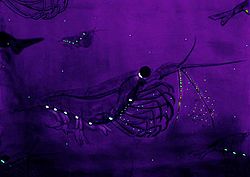



Bioluminescence is the production of light by living organisms. The environment organizes this list of bioluminescent organisms, covering terrestrial, marine, and microorganisms.




Bioluminescence is the production of light by living organisms. The environment organizes this list of bioluminescent organisms, covering terrestrial, marine, and microorganisms.
